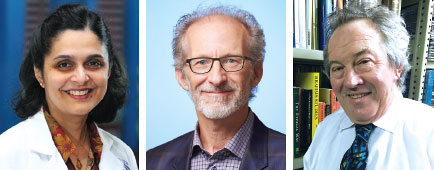New Findings and Controversies in Physician Well-Being and Burnout

Physician burnout and depression are now a major focus of attention by psychiatrists, physicians in general, health care administrators, policymakers, and, increasingly, patients. Most physicians are familiar with the three symptoms of burnout originally described by Christina Maslach, Ph.D., in 2008 in the Journal of Applied Psychiatry—emotional exhaustion, depersonalization, and decreased sense of efficacy—and of the numerous reports about the systemic causes of burnout and the need for systemic change to address burnout. At APA’s 2019 Annual Meeting, Maslach made an impassioned plea to remember that burnout is a spectrum condition and not a binary phenomenon. That is, burnout is not either present or absent; physicians may suffer from degrees of burnout.
The overlap between burnout and depression and other psychiatric illnesses is now the subject of intensive study, and the relationship between these conditions is complicated. Burnout may be a predisposing factor to depression, depression may predispose to burnout, and sometimes burnout is the narrative that physicians feel most comfortable with in addressing their suffering (Psychiatric News).
Data gathered by the APA Committee on Well-Being and Burnout from more than 2,000 psychiatrists who completed an online burnout self-assessment (psychiatry.org/burnout) showed the remarkable prevalence of both burnout and depression among our members, although psychiatry is thought to have lower rates of burnout than most other specialties. The second year of the committee’s work will focus on studying burnout and depression among minority psychiatrists.
For Further Reading
Several recent important and interesting findings and controversies regarding burnout remind us of the complexity of this topic. First, Srijan Sen, M.D., Ph.D., the Frances and Kenneth Eisenberg Professor of Depression and Neurosciences at the University of Michigan, and his group found not only significant acceleration in the rate of depression among first-year residents but also telomere shortening that was markedly greater than expected. This is thought to reflect the increased “cellular aging” that residents experience in the early training years related to stress and, perhaps, sleep deprivation. This is the first objective measure identified that may help to track the stressors associated with physician burnout.
Second, despite the increased awareness of burnout and shared sense that the problem is worsening, Tait Shanafelt, M.D., director of the Stanford WellMD Center and chief wellness officer of Stanford Medicine, and colleagues found that across all medical specialties, burnout and satisfaction with work-life integration improved from 2014 to 2017, in contrast to their finding that these measures worsened from 2011 to 2014. This very interesting observation may reflect changes in the health care system, although this would be before the recent significant attention to the burnout problem. It also may reflect changes in expectations among physicians. The finding is certainly a cautionary note in forming simplistic, negative beliefs about the changes in our health care system.
Third, the appreciation of the financial cost of burnout is increasing. The mathematical model described recently in the Annals of Internal Medicine concluded that a conservative estimate of the costs of physician burnout to the U.S. health care system is $4.6 billion a year, with estimates ranging from $2.6 to $6.3 billion. The study authors concluded that, at an organizational level, the cost of burnout-related physician turnover and reduced clinical hours was $7,600 per physician per year. These remarkable costs help make the point that health care organizations that ignore physician burnout do so at their financial peril.
Fourth, in ICD-11, burnout is identified as a “factor influencing health.” It is valuable to have the burnout code in ICD-11 because it enhances the visibility of the problem, encourages opportunities for further study, and highlights the need to better understand relationships between burnout, depression, moral injury, posttraumatic stress disorder, and other conditions.
Fifth, focusing on the notion of resilience has a concerning connotation when used in the context of physician burnout. While it is important for physicians to focus on strengths and take advantage of opportunities to enhance resilience in the face of stress, it is crucial to maintain our focus on the systemic causes of burnout and systemic solutions. Focusing too much on resilience may cause us to plow ahead without paying attention to our own health. We risk worsening our levels of stress, alienation, and cynicism when we most need commitment, engagement, and creativity.
These five findings are just a few of the exciting developments in the field of physician well-being and burnout. There will surely be many more in the coming months and years, and we are all glad that attention is increasingly focused on the problem and the potential solutions. Our APA is poised to address the burnout challenge through its standing Committee on Well-Being and Burnout, chaired by one of the authors of this article (Richard F. Summers, M.D.) and most recently through the publication of Combating Physician Burnout: A Guide for Psychiatrists from APA Publishing. ■



